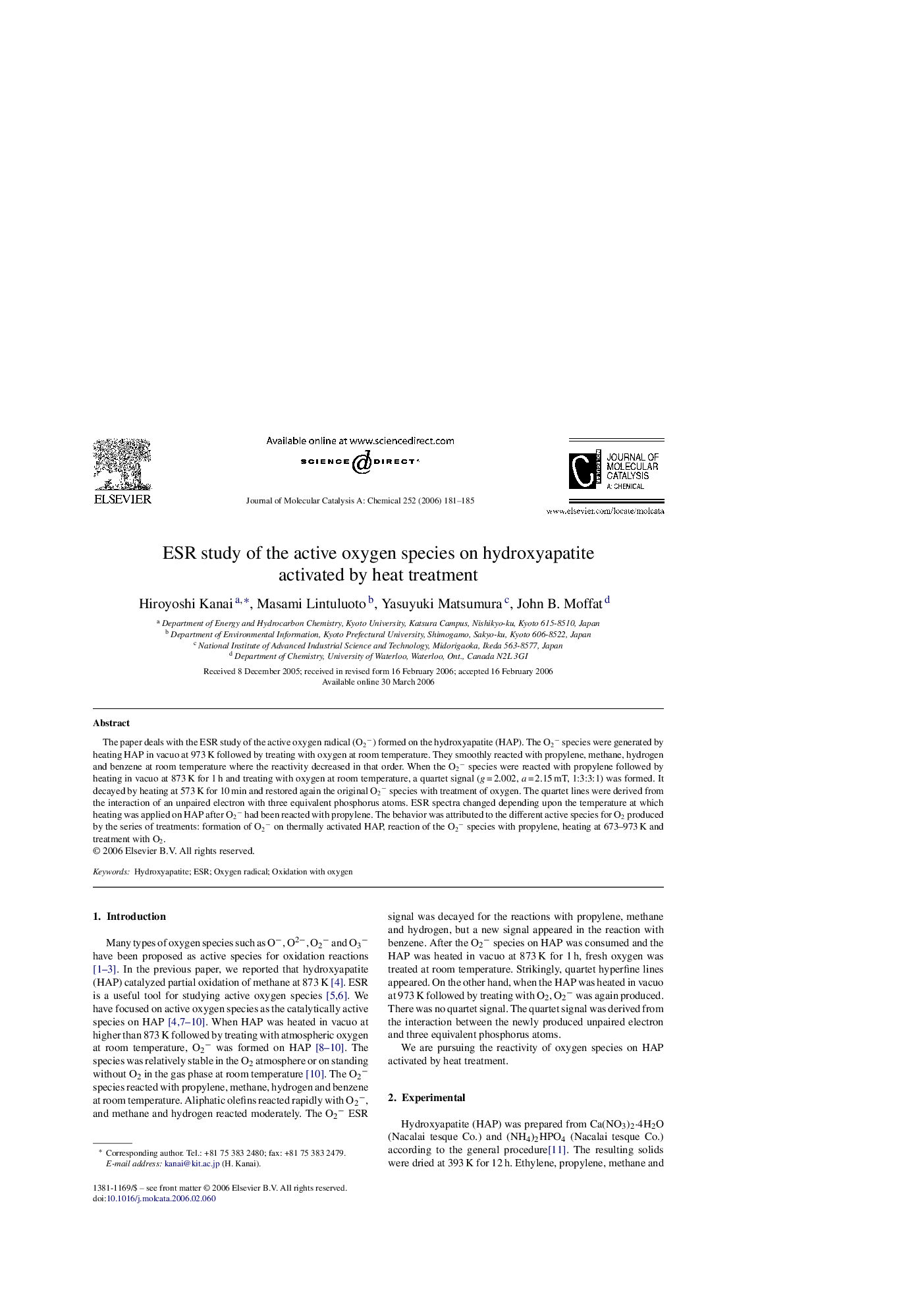| Article ID | Journal | Published Year | Pages | File Type |
|---|---|---|---|---|
| 68988 | Journal of Molecular Catalysis A: Chemical | 2006 | 5 Pages |
The paper deals with the ESR study of the active oxygen radical (O2−) formed on the hydroxyapatite (HAP). The O2− species were generated by heating HAP in vacuo at 973 K followed by treating with oxygen at room temperature. They smoothly reacted with propylene, methane, hydrogen and benzene at room temperature where the reactivity decreased in that order. When the O2− species were reacted with propylene followed by heating in vacuo at 873 K for 1 h and treating with oxygen at room temperature, a quartet signal (g = 2.002, a = 2.15 mT, 1:3:3:1) was formed. It decayed by heating at 573 K for 10 min and restored again the original O2− species with treatment of oxygen. The quartet lines were derived from the interaction of an unpaired electron with three equivalent phosphorus atoms. ESR spectra changed depending upon the temperature at which heating was applied on HAP after O2− had been reacted with propylene. The behavior was attributed to the different active species for O2 produced by the series of treatments: formation of O2− on thermally activated HAP, reaction of the O2− species with propylene, heating at 673–973 K and treatment with O2.
Graphical abstractHydroxyapatite was heated at 973 K followed by reacting with O2 to give O2−. The O2− species rapidly reacted with propylene at room temperature. Then the hydroxyapatite was heated at 873 K followed by treating with O2 to give a quartet signal (g = 2.002, a = 2.15 mT) derived from the interaction between the newly formed unpaired electron and three equivalent phosphorus atoms. Figure optionsDownload full-size imageDownload high-quality image (43 K)Download as PowerPoint slide
